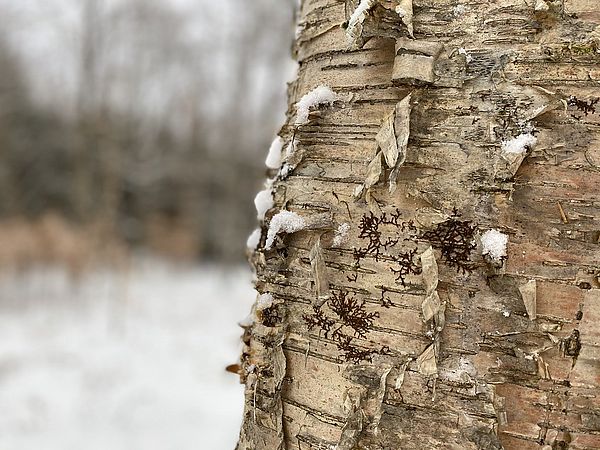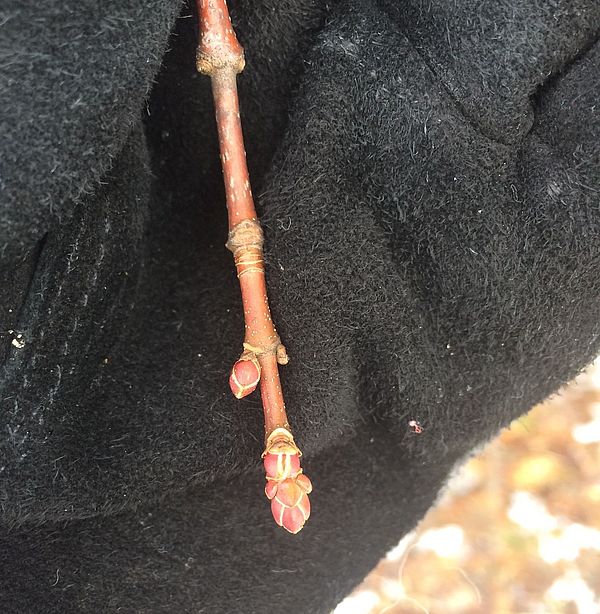Getting out in the woods in the winter can bring an entire new appreciation for the plants and animals we live with. The adaptation strategies employed by our near kin show them as much hardier than ourseleves. While trees may lose their leaves, we bundle up. It is also time to see more of the unique beauty in the trees and shrubs that surround us. Just take a look at the beautiful red stems of the dogwood shrubs or the brilliant berries that last all winter on the Winterberry Holly. The contrast of the evergreen; pine, spruce, fir and hemlock against the white snow. The fruit of the sumac, yellow birch and hardhack that stay on the tree to feed the birds and mammals in their winter forage. One does not need to identify everything to know the value of our trees and shrubs.
But, if identification is your quest, now is the time to forget the leaves of the hardwood trees and to find a different diagnostic. The very best way, at any time of year, to identify a tree is by its bark. It also may be the hardest to learn, so start slow, pick a few trees you know and build from that. You can also look to the twigs. When concentrating on trees, look up. Only ash and maple here in VT have branches where the twigs grow out opposite from one another. The ash twigs are opposite but much, much stouter than the maple twigs. So, now we have ash and maple down, what about cherry and the birches, Cherry will have black bark broken into platelets, while the bark of birch will peel. White birch peels in sheets while yellow birch peels in fine strips. There is a start.
Bring a good book with you, and one I recommend is Forest Trees of Vermont edited by Trevor Evans. This book has beautiful photographs and includes only trees that grow in VT, eliminating the confusion that a wide geography could bring. There are also apps that could help. I like Seek, a camera app that is based on inaturalist. This can be fun, but mostly just get out and say hello, maybe give a hug to our relatives the trees, and take things slow. The walk is enough.

